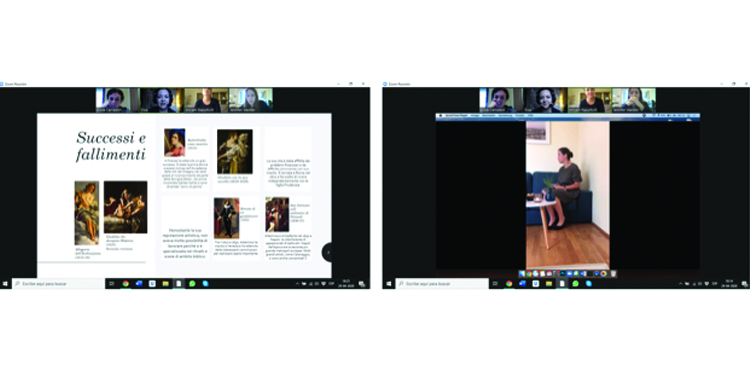
Italian courses for foreigners
Italian courses for foreigners: creative writing and acting as resources in classroom.
LIVE ITALIANME
When we talk about Italian courses for foreigners, we move further and further away from pure grammatical analysis to get closer to communication. Just look at the Italian for foreigners manuals that we use every day during our lessons to make this transformation. At this time, the units (chapters) are divided by themes (fashion, culture, atmosphere, in the bar, among others) and each one takes into account a part of reality, a probable context that students could live during their Italian experience.
We always try to develop cutting-edge Italian language and culture courses, face-to-face and online, that not only address grammar and communication, but are based on other areas: sometimes we delve into some topics through literature, others with writing, music, art, or we put on a comfortable pair of shoes and we dedicate ourselves to urban trekking (in our case, being in Florence is really lucky!). It is not only a way to diversify the offer, but also an opportunity to learn a language through the body and mental processes that are different from those exclusively linguistic.
In our experience, the use of creativity in the classroom is highly appreciated to put into practice what has been learned so far. For example, in one of our B1 level online Italian classes, inspired by the manual that dedicated a unit to Italian historical figures, we chose to deepen into the life of Artemisia Gentileschi, a great painter from the 17th century, who left indelible marks on our city. During a lesson, we asked each student to do a little research on the topic and to tell it in front of the class independently of the way. In this circumstance the password was “off to fantasy“! The group class always manages to surprise with talent and ability. There are those who, like Ewa, prepared slides as if they were attending a conference; Jennifer proposed Gentileschi in verses; Miriam, on the other hand, brought her to life by personifying her giving life to an interview that went beyond the borders of space-time.
In this case, as in many others, the challenge for us teachers is to leave more and more space for students, to give them the opportunity to express themselves according to their personality and to be guides for them in the discovery not only of Italian, but also of their new identity as speakers of this language. Thanks to an experience like this, those who are learning have been able to experience a new way of learning and find fertile ground to overcome their limits, both in class and in life. There is nothing else left, so let your imagination run wild and continue this adventure!


